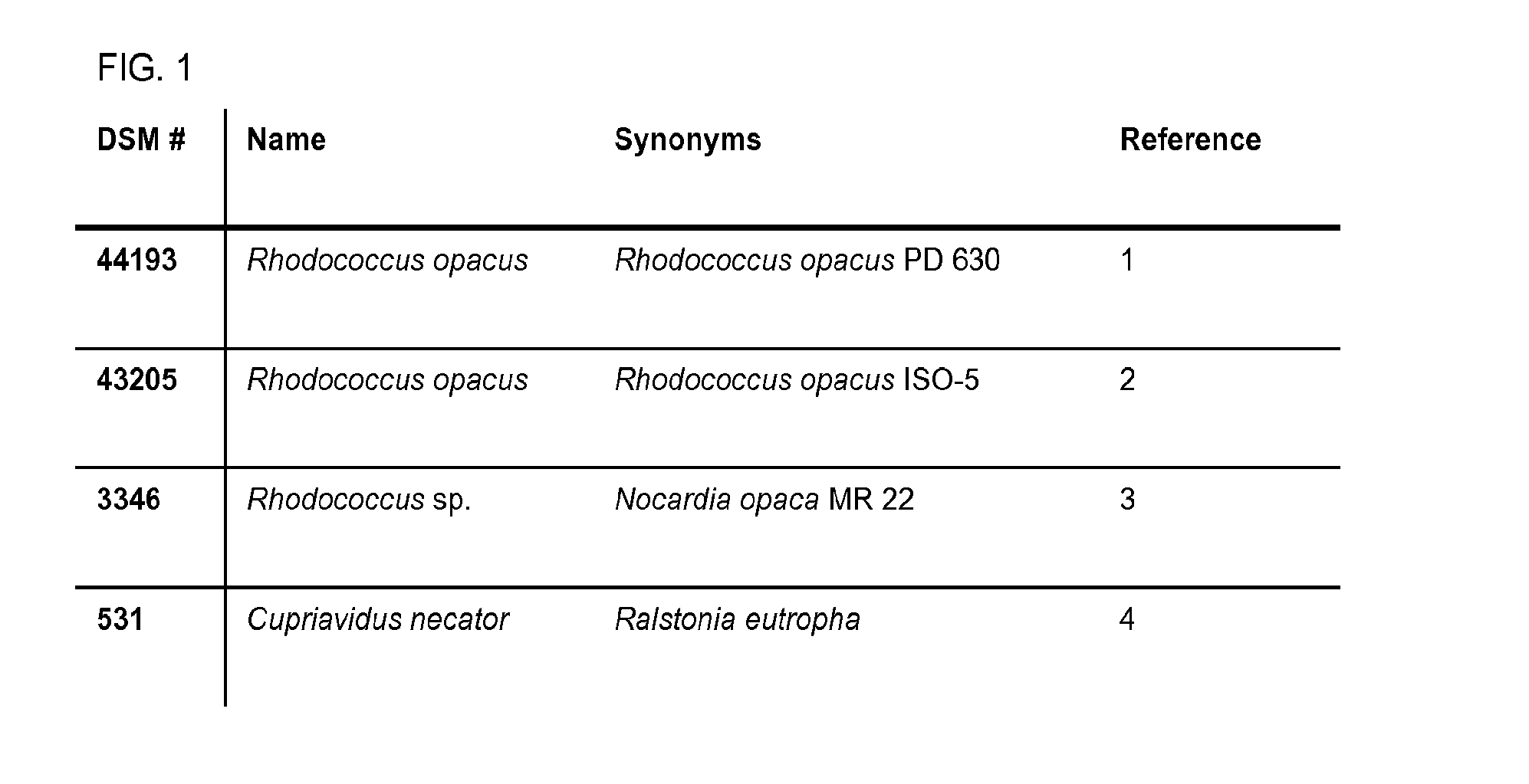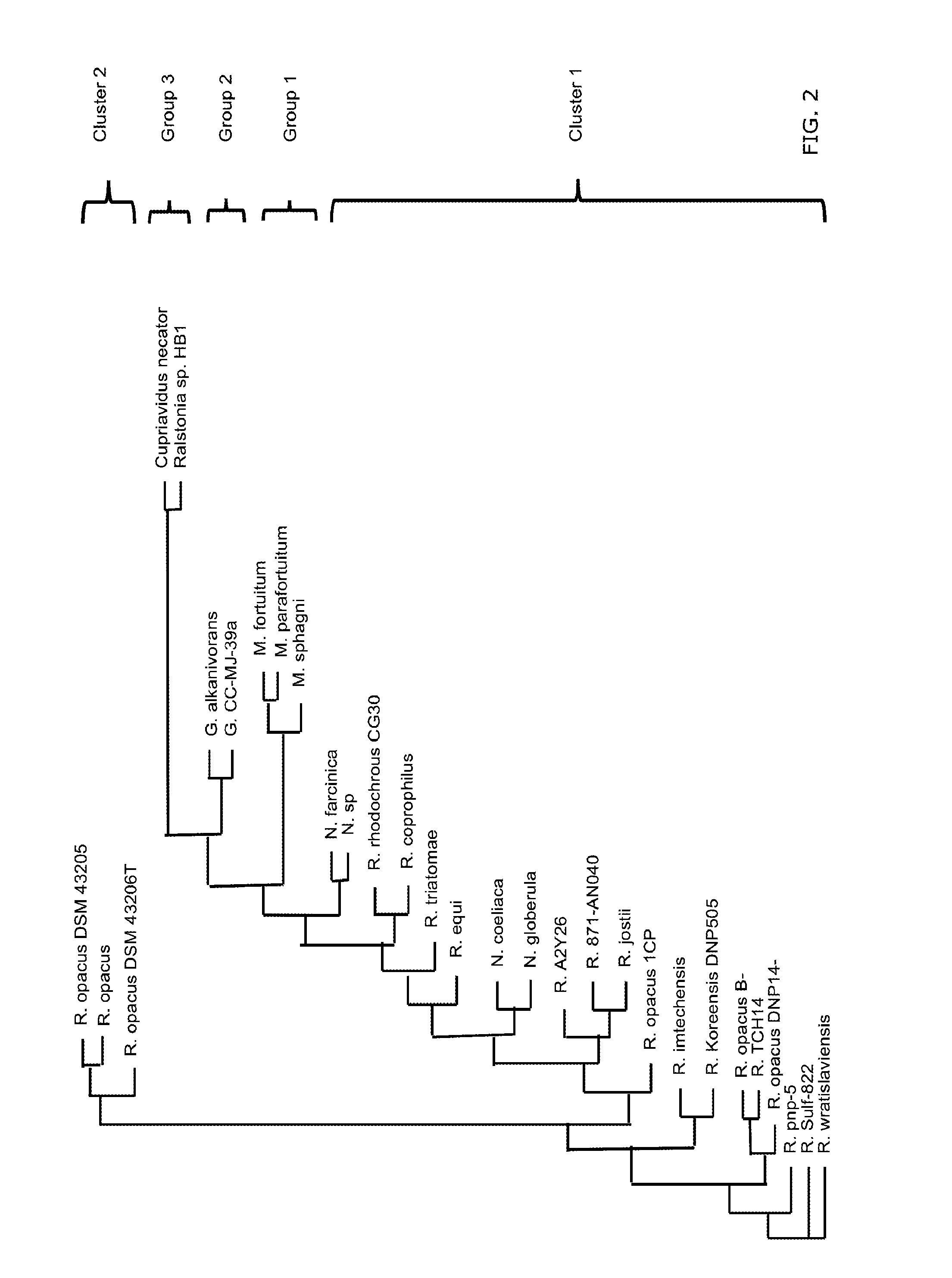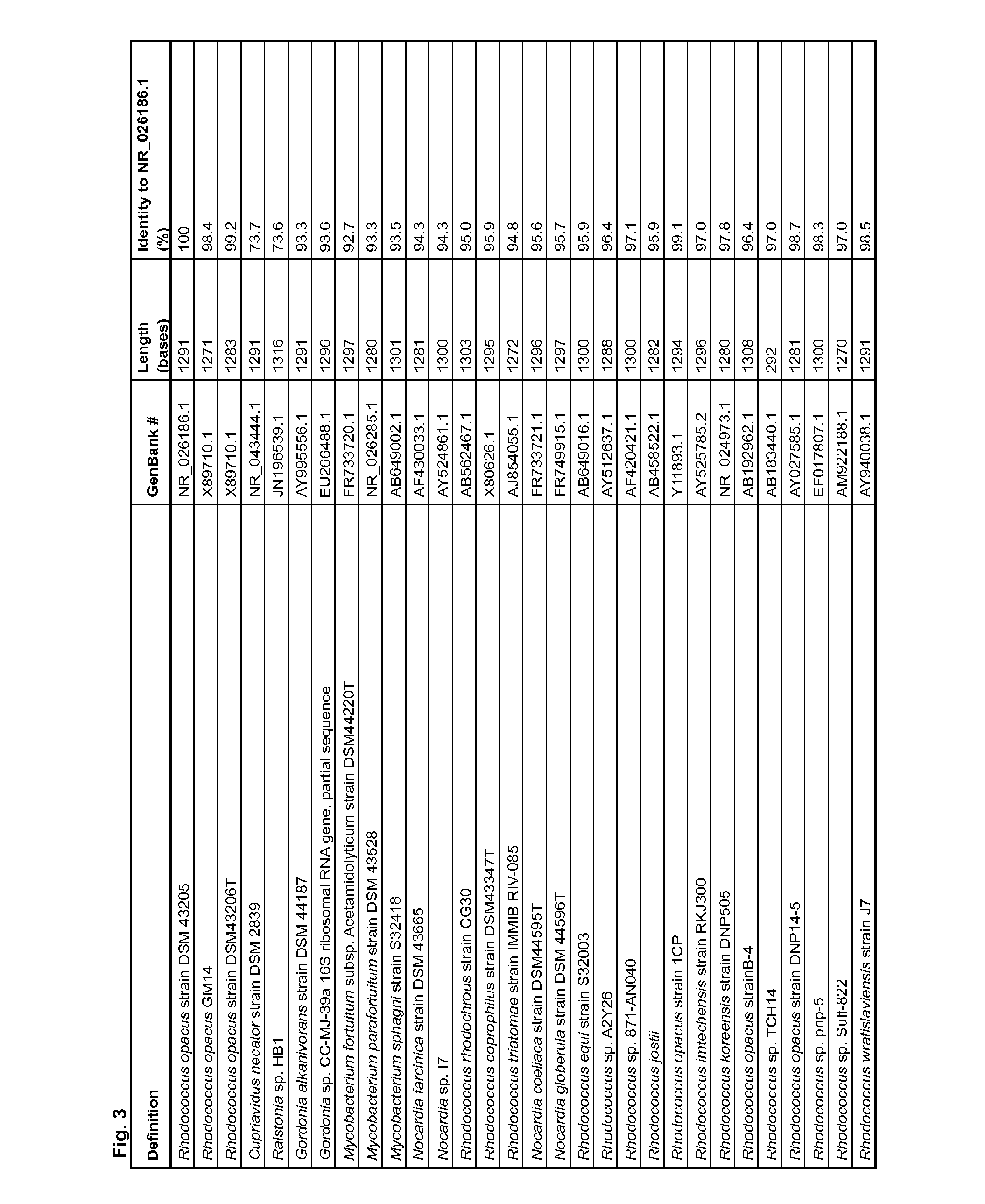Engineered CO2-Fixing Chemotrophic Microorganisms Producing Carbon-Based Products and Methods of Using the Same
- Summary
- Abstract
- Description
- Claims
- Application Information
AI Technical Summary
Benefits of technology
Problems solved by technology
Method used
Image
Examples
example 1
Characterization of Organisms Sharing High 16SrRNA Sequence Similarity
[0492]To identify organisms closely related to R. opacus strain (DSM43205), a basic local alignment search (BLASTR) with the BLASTN programs search of nucleotide databases using the 16S rRNA (NR—026186.1) was carried out. The phylogenetic relationships, based on the 16S rRNA gene sequence homology, between the tested strain and the reference strains of the suborder corynebacterineae (corynebacterium, gordoniaceae, mycobacteriaceae and nocardiaceae) and the family burkholderiaceae (genus cupriavidus and ralstonia) are shown in FIG. 2. The nocardiaceae are related and form two clusters of organisms: clusture1 that contains 20 organisms from the genus nocardia and rhodococcus and cluster 2 that contains 3 R. opacus strains (DSM43205, GM14 and DSM43206). The gordoniaceae, mycobacteriaceae and burkholderiaceae form 3 separated groups (1, 2 and 3). The gram positive chemoautotroph lipid accumulating strain R. opacus (DS...
example 2
Lipid Profiles, Production of Fatty Acid
[0507]Under heterotrophic growth conditions strains DSM 44193, DSM 43205, DSM 3346 and DSM 531 produce lipid (FIG. 6). Lipid content determined by gas chromatography analysis of cells harvested after 72 hr (unless otherwise indicated) showed over 19% of cellular dry matter (CDM) determined gravimetrically for strains DSM 44193, DSM 43205 and DSM 3346. The lipid content of DSM 43205 was higher than 10% of under chemoautotrophic conditions. Under heterotrophic growth conditions DSM 44193 produces 32%, 26% and 21% of 16, 17 and 18-carbon fatty acid respectively (FIG. 7). DSM43205 produces similar amounts of 16, 17 and 18-carbon fatty acid (30%, 24% and 32% respectively) (FIG. 8A). Chemoautotrophic growth condition significantly reduces the 17-carbon fatty acid abundance (6%) and maintains similar levels of 16 and 18-carbon fatty acid (36% and 27% respectively) (FIG. 8B). DSM3346 exhibits similar fatty acid distribution of 16, 17 and 18-carbon fat...
example 3
Production of Alkanes
[0508]To redirect carbon flux from fatty acid toward alkanes biosynthesis, the genes Fatty acyl-CoA / Fatty acyl-ACP reductase (FadR) and Fatty aldehyde decarbonylase (FAD) from the decarbonylation pathway of cyanobacteria (indicated in red) were expressed in Cupriavidus necator (DSM 531) (FIG. 19).
[0509]The plasmid pSeqCO2::FUEL (FIG. 20) described in the text was introduced into Cupriavidus necator (DSM 531) as described above and 2 independent transformants (Cn-FUEL2.1 and Cn-FUEL2.2) were selected. One hundred ml of Cn-FUEL2.1, Cn-FUEL2.2 and control cells (empty plasmid: Cn-P) were incubated on LB medium with 400 μg / ml kanamycin for 30 hr. Cells were harvested at 3,000×g for 10 min at 4° C. and pellet was analyzed by GC / MS. Cn-FUEL2.1 (FIG. 21A) and Cn-FUEL2.2 showed a specific peak at 45.00 min compared to control Cn-P (FIG. 21B) indicating the presence of hydrocarbons in the engineered strains. Cn-FUEL2.1, Cn-FUEL2.2 produced high levels (over 2%) of unique...
PUM
| Property | Measurement | Unit |
|---|---|---|
| Fraction | aaaaa | aaaaa |
| Mass | aaaaa | aaaaa |
Abstract
Description
Claims
Application Information
 Login to View More
Login to View More - R&D
- Intellectual Property
- Life Sciences
- Materials
- Tech Scout
- Unparalleled Data Quality
- Higher Quality Content
- 60% Fewer Hallucinations
Browse by: Latest US Patents, China's latest patents, Technical Efficacy Thesaurus, Application Domain, Technology Topic, Popular Technical Reports.
© 2025 PatSnap. All rights reserved.Legal|Privacy policy|Modern Slavery Act Transparency Statement|Sitemap|About US| Contact US: help@patsnap.com



